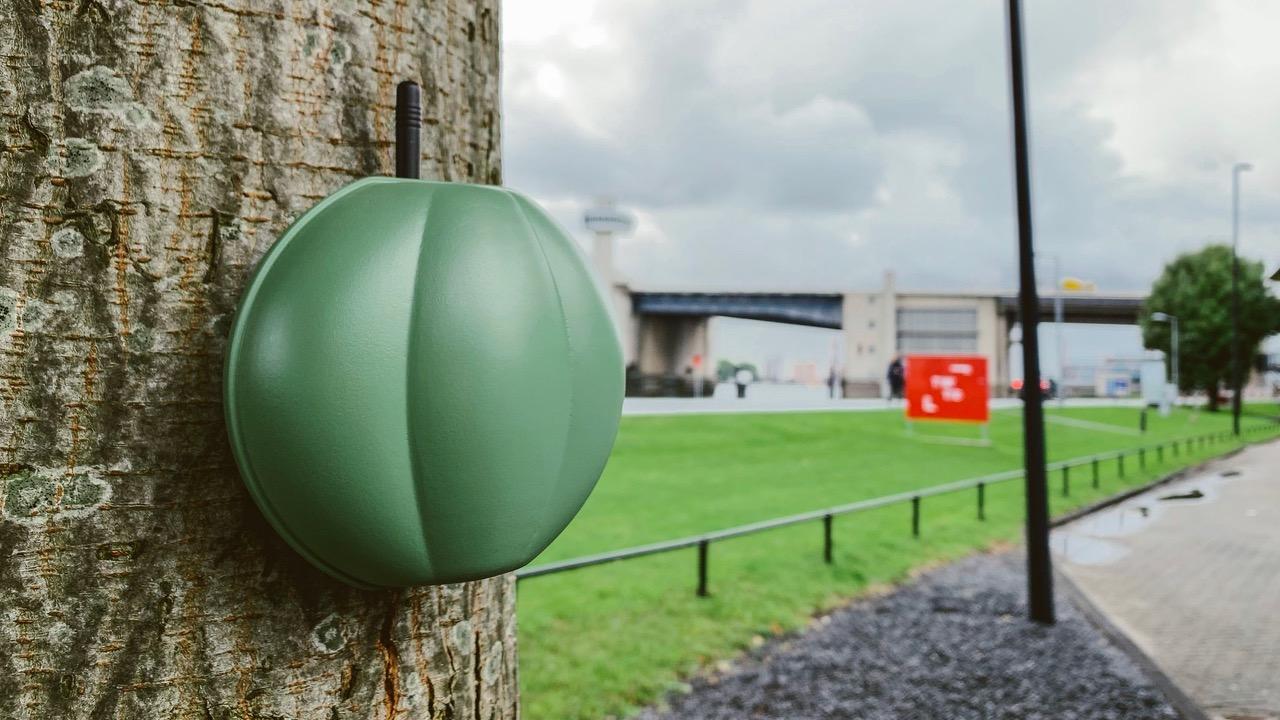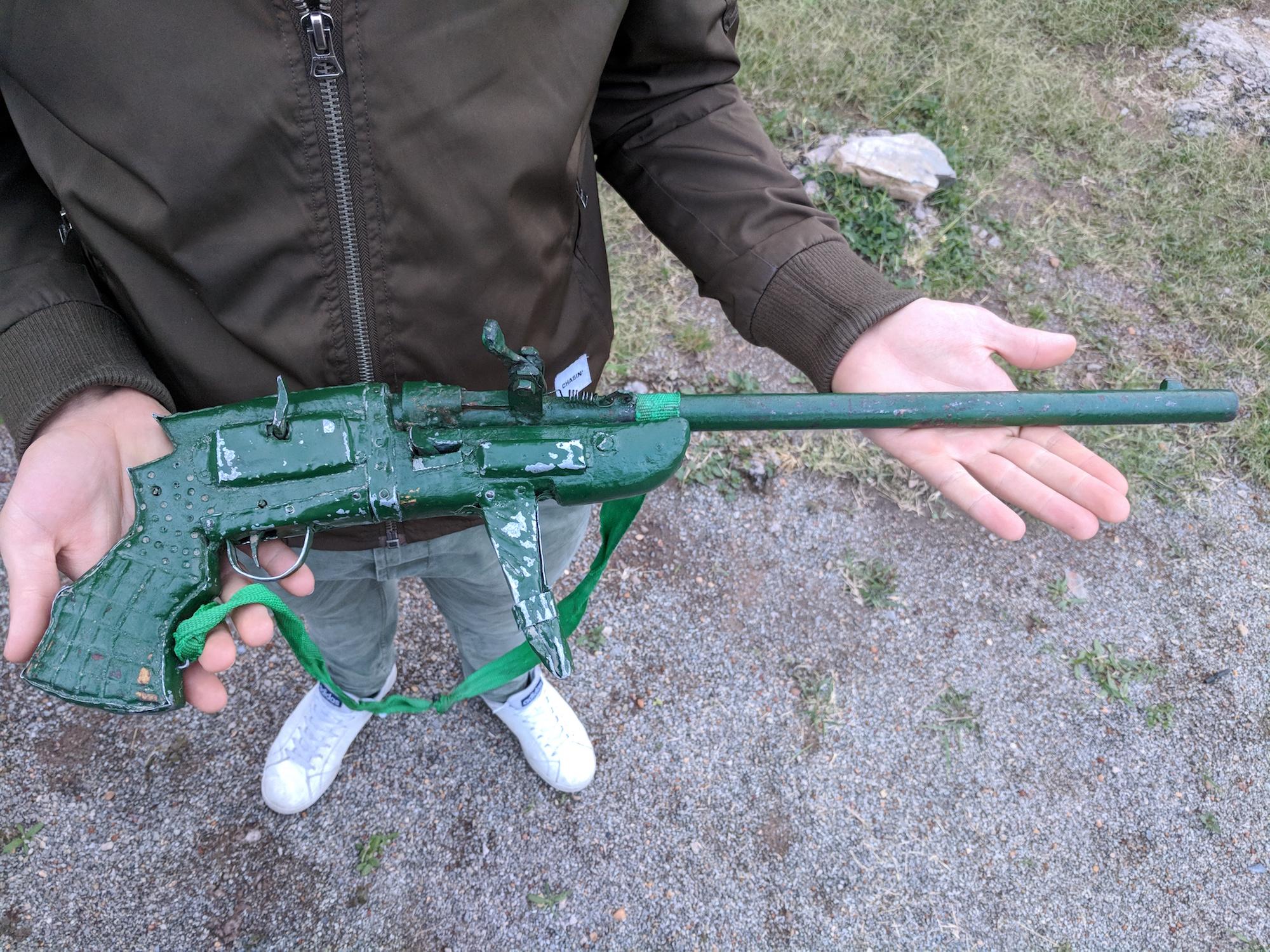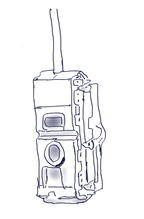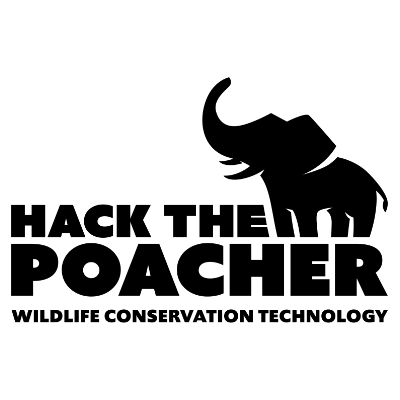
The Hack the Poacher concept reflects the modern challenges of conservation by tapping into the power of our most common personal tech tool: the mobile phone. Rangers on the frontlines of the poaching crisis have identified a need for technology that can alert them in real-time when poachers are within protected spaces, and Hack the Poacher's prototypes and field tests present one possible way to fill this technological gap.
First tested in the field in April 2018, Hack the Poacher's prototypes allowed Tim and Thijs to give the general concept a trial run, address the challenges that come with deploying technology in remote areas, and build on the expertise of the local rangers who would use this system. The idea is simple yet clever: find a way to detect poachers' cell phone signals so rangers in the area can be alerted to their presence. In the future, they believe this system could also work in tandem with other tech tools like cameras, machine learning, and satellite imagery, giving rangers an additional edge and keeping them a step ahead of poaching activities.

One unique aspect of this system is its ability to act as a deterrent to poachers, ideally preventing the crime from occurring in the first place rather than serving as a mere rapid response system. As Tim explained to us, "While developing the concept, we spoke with several rangers who addressed this issue. The best anti-poaching concept would be something that makes it so poachers don’t want to come into an area. This is why we are not so secretive about how the system works. We don’t necessarily want to catch poachers - we want them to stay away. Consider it like a speed trajectory [radar sign] from the police; you see it, you know it’s there. Most of us avoid speeding, but some people get fined."
We talked with Tim to get the details on how the Hack the Poacher system was created and fine-tuned, their future ambitions for expansion, the challenges of deploying new technology in the field for the first time, and how other innovators can learn from their experiences.
Read on for his full interview.

Innovator Interviews: Tim van Deursen

Q: Why cell phone detection?
Protecting large areas has always been challenging, and relying on the ears and eyes of rangers has always been the primary way of securing animals within reserves. But this task can be dangerous and time-consuming. Many initiatives in the past focused on optimizing detection of poachers by trying to get eyes on the poacher with, for example, the use of drones, night vision cameras, radar, and satellites. While these techniques can be effective, the costs are often too high to implement on a large scale, or too technologically advanced to be operated by people other than the tech team behind the product.
Q: Tell us about this concept's early days.
One of our biggest supporters is Green Safaris, who, along with eco-tourism, focus strongly on conservation and local community development. Green Safaris invited us to Kafue National Park in Zambia and facilitated several meetings with rangers and agencies like Panthera.

We hadn’t realised the desperate situation poachers are often in. It can be easy to think about poachers as evil people looking for a big sum of money by collecting some precious ivory, but in reality, these poachers are often extremely poor, risking the only thing they have left to provide for their families. During our visit to the local ranger unit, we got to hold a handmade rifle they confiscated from a poacher. Imagine how dangerous it is to use a weapon like this.

While developing the [Hack the Poacher] concept, we spoke with several rangers who addressed this issue. The best anti-poaching concept would be something that makes it so poachers don’t want to come into an area. This is why we are not so secretive about how the system works. We don’t necessarily want to catch poachers, we want them to stay away. Consider it like a speed trajectory control of the police; you see it, you know it’s there. Most of us avoid speeding, some people get fined.
Q: Tell us about the first prototype and finished product.
The first prototype we developed was very different from the one we now have. The system was able to mimic a cell phone tower, resulting in phones wanting to connect to it. This provided us with information about the phone, like the unique ID of the phone, the IMSI number.
While that might sound interesting, it has several downsides. The first is that this is not allowed to do in most counties worldwide. Secondly, it costs processing power. Third, and most importantly, you cannot do a lot with it in poaching-related court cases. World Crime Prevention (WCP) provided us with valuable information on how they operate, how poachers get arrested, and what helps in court cases. Having an IMSI number was not helpful since often phones cannot be reliably linked to a person.
Without the need to record the unique phone ID, we started to think about simpler ways to approach this issue. We shifted our focus towards more accurate detection of GSM activity and optimizing triangulation once a detection was made. To get a global position of someone, you need to “see” it from different angles, just like how your phone gets its location based on multiple satellites. To achieve this, we developed software that enables each sensor to talk to other nearby sensors. This way, the whole grid of sensors is connected and we always know which sensor detected a GSM signal.

The grid is connected to a cloud service we developed. All signals are processed and, depending on how many sensors detected the GSM signal, a location is calculated. This information is immediately shared with rangers.
Because of the hardware simplicity, the device requires a limited amount of power. The sensors can operate fully autonomously with just a few hours per day offline. A small solar panel makes sure the device is charged during the day, and there is enough battery capacity for the device to be operational for the majority of the day.

Q: Do you use specific criteria to select the technology you use? Did you consider any other tools while developing this project idea?
Any new idea starts first by looking at what we want to achieve. I dream of the outcome and how it looks. Once this is clear, we start looking at the How. An important part of this is looking at what has already been done and who else is working in this area of expertise. Ideally, we try to use technology that we know will work. Unfortunately, when creating innovative solutions, you often cannot find the exact things you need; you are the one creating it at that moment.
Q: Did the technology work as you expected? What worked best for you? What were some of the biggest challenges you faced using this technology in the field? Was there anything that didn't work the way you expected, or needed to be adjusted or improved?
The first prototype we developed did what we expected, but we encountered many different issues along the way. A major learning experience for us was realizing that things never work exactly as expected out in the field. Transmission range is shorter than expected, terrain is more difficult than anticipated, the list goes on…
What always works for us is not giving up on the core idea. So many things can set us back, but that doesn’t mean we have failed. It proves that what we want to achieve is not trivial. Finding new motivation and solutions to the encountered issues is what works for us and brings us to where we are today.

The good thing is that, while we are always optimistic, we are also eager to validate. This is why we organised a pilot in 2018 and went to Zambia. We deployed several of our prototype devices ,and while doing that, we first bumped into issues. The biggest challenges we took back with us are two things: 1) Things will break in the bush, so the technology needs to be super robust, and 2) Relying on existing infrastructure is best avoided (power outages are common, and high towers cannot be used easily).

Q: What was the hardest day you had working on launching this project? What was the best day of the whole process so far?
Getting funding to get started on the project was one of the best days, and obviously the support from WWF meant a great deal to us.
We recently had the hardest day when we learned that a specific technical setup could not be developed. This news hit us hard because we were relying on it, and spent a lot of time on it. But not long after, we found a new and even better way of doing things. The new setup will provide a way to be fully independent of existing infrastructure by using a satellite solution, something we did not have in the setup before. A major improvement!
Q: Is there anything you would do differently if you could do this project again from the start?
So many things! That might sound strange, but I think that's a good thing. We are working on a very thin line between thinking about what we want, designing the solution, specifying it, and actually building things to prove it can be done. Many times you simply need to try things out and get a feel for the technology, the people who will use it, the area where it will be deployed, etc. If you could travel back in time to share these insights with yourself, obviously things would be easier from the start.

Q: What’s next? How will Hack the Poacher expand?
While we were working on the GSM detection system and tested our prototype, I came across a camera trap. The rangers using it showed me how it worked and I was stunned. Most camera traps work by taking a photo and storing it on a SD card, and rangers need to physically retrieve the SD cards to see what is on the photo. I immediately thought about how awesome it would be if the camera could simply analyse the photo and send a message to rangers (for instance, if it has seen a human).
We are now building a special add-on that can be connected to existing camera traps. This add-on uses Machine Learning to detect what is on a photo and could alert rangers when a human is detected. This camera trap solution will be part of the "Hack the Poacher" program. We have started a collaboration with Google to work on this new type of camera trap, and Google is helping out with several engineers to make sure everything works and performs well on the Coral hardware.

Q: What are some of the shortcomings of the technology you’re using for your work that you’d like to see addressed in the future?
Currently, it's nearly impossible to send data (like a photo) from a remote, disconnected location to the Internet on a limited budget. For someone living in a connected Western city, this can be hard to understand, but it’s really difficult to pull off. Sure, you can use a satellite uplink, but that is very expensive and therefore difficult to use on a large scale. Luckily, there are some great initiatives in development that will solve this issue and be very beneficial for many conservation projects relying on data from remote areas.

Q: Any thoughts for other people developing solutions for poaching?
Besides the fact that we are techies and like to work on innovative technological solutions for these issues, it’s a pity that these solutions are still needed so badly in the area of conservation. We have witnessed firsthand how difficult it is for rangers to do a good job because of the immense size of national parks and the flood of poachers coming in every day. The things we are doing are pieces of a much larger puzzle that needs to be solved. Obviously the demand for ivory needs to be addressed, but what can be said of the people in nearby villages who poach because they simply don’t have any food or money? There is so much to do, and as much as I would like to believe so, I know technology isn’t always the solution.
This is the reason we now organise meet-ups and hackathons, inviting people from all over the world who have different areas of expertise. The time to act already passed long ago, but we can prevent more damage and start restoring nature as soon as possible.
Q: What advice would you give people who have very ambitious ideas for using technology in conservation, but don't know how to start?
Just start! Prepare for many people to think you are crazy, or try to convince you that your solution won’t work. Don’t assume people can read your mind or have the same train of thought as you. Ideas in their first phase are brittle and easily destroyed. Don’t give in too easily.

Learn more about Hack the Poacher here, and get in touch with Tim and Thijs here if you're interested in collaborating with Hack the Poacher.
About the Innovators
Tim van Deursen founded Hack the Planet, a non-profit initiative of Q42. Tim is an engineer on a mission to make a positive contribution to the world. He wants to super-charge high tech ideas and concepts needed to solve global challenges. Tim believes many of the challenges that we face nowadays can benefit from smart and easy-to-deploy technology. “Technology can, and needs to be, part of solving global challenges; therefore, with Hack The Planet, we are making this happen”.

Thijs Suijten loves helping people achieve their goals by using technology. At Hack The Planet, he helps organisations like Greenpeace and WWF innovate with limited resources and big ambitions. "By focusing on pragmatic engineering, we are able to achieve amazing results and take on global challenges like poaching and humanitarian conflicts."



Add the first post in this thread.